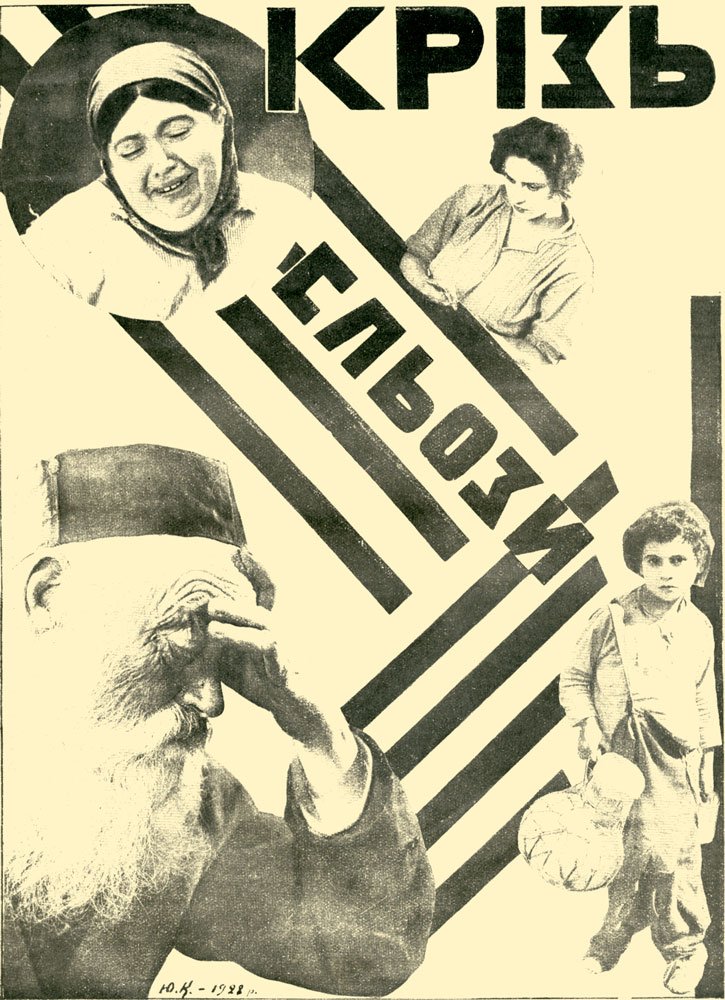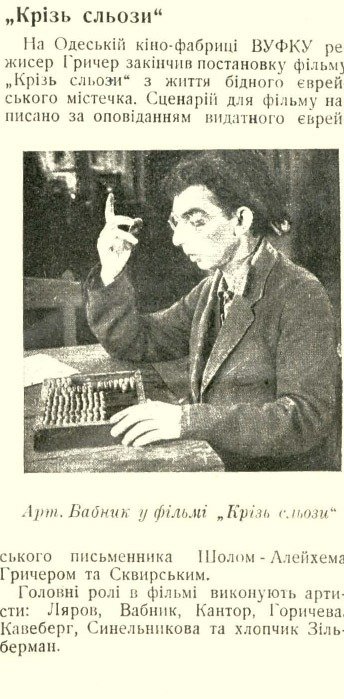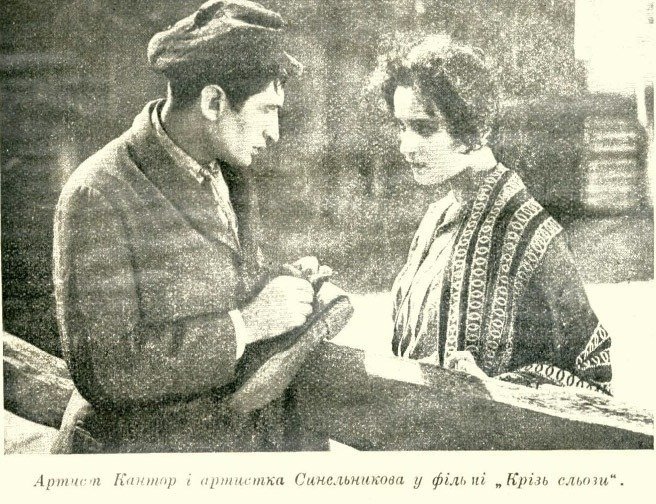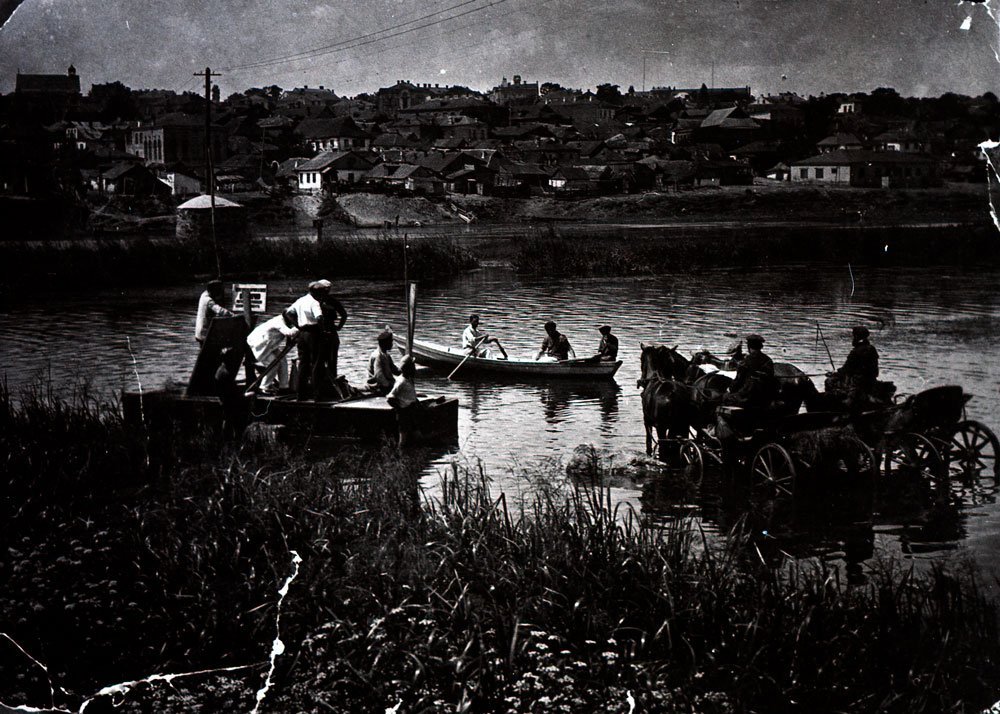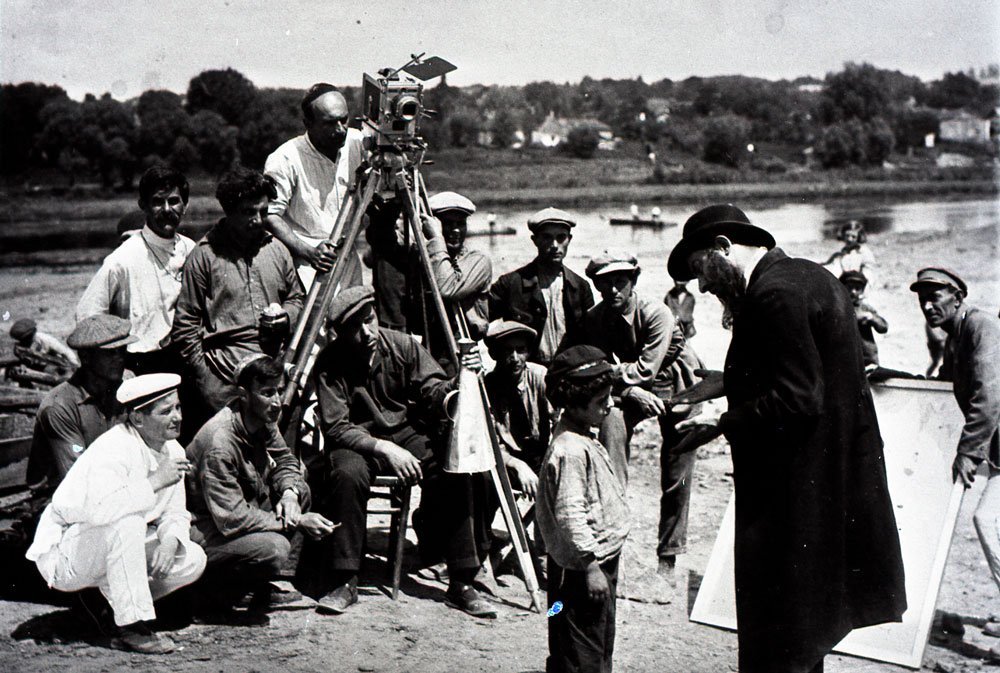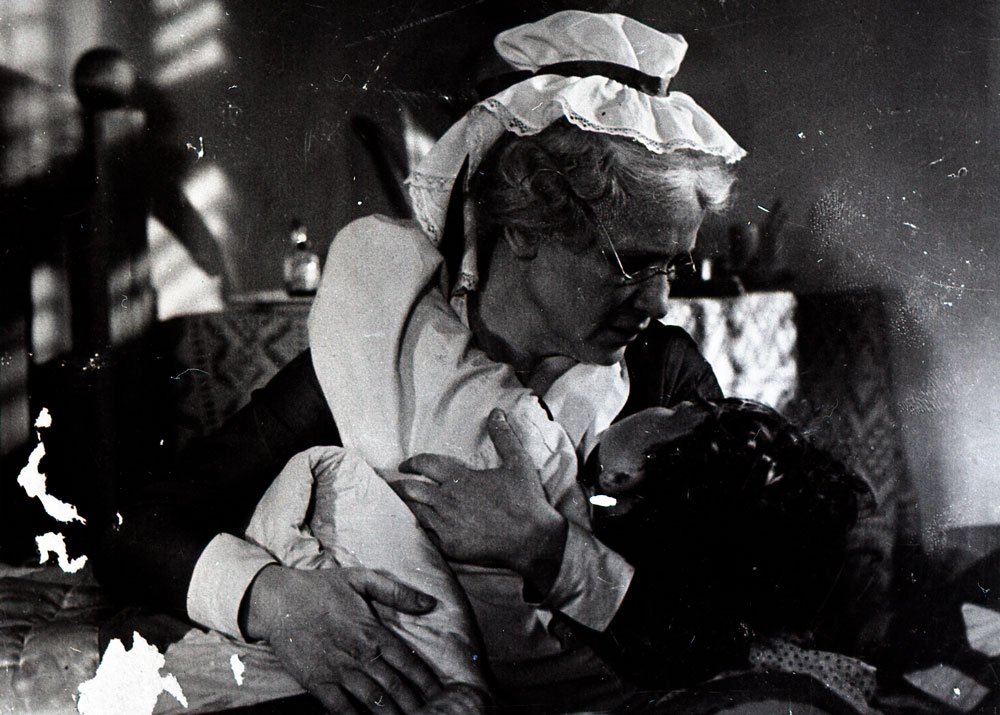
Through tears / Pages of the Past / Kriz sliozy
1928
Ukrainian SSR, VUFKU
75 min
Hryhorii Hrycher
Hryhorii Hrycher, I. Skvyrskyi
Fridrikh Verigo-Darovsky, Nikolas Farkas
Ivan Kaveberh, Anna Horicheva, Mariia Synelnykova, A.K antor, Volodymyr Lanskoi, Moshele Zilberman, Abram Vabnyk, M.Zaslavskyi, Tsuker, B. Chernov, Oleksandr Sashyn, Osyp Merlatti, Matvii Liarov, Moshele Zilberman, Teodor Brainin, Anastasii Symonov, Aleksandr Istomin
In a small town, there lives a poor cobbler named Perchyk, who has long dreamed of buying a goat. Meanwhile, Perchyk’s daughter Frida falls in love with the unemployed Elye. Perchyk is strongly against their marriage—his goat dream will be out of the question with a penny-less son-in-law. Eventually, Perchyk buys a goat from a wealthy innkeeper, but instead of a goat, the innkeeper tricks Perchyk into buying a buck. To make matters worse, a disgruntled official, unhappy with a uniform Perchyk made for him, fabricates a document that gets Perchyk and his entire family exiled from the town as troublemakers.
Hardworking VUFKU employee Hryhorii Hrycher was known as a master of tragicomic sketches depicting the lives of Ukrainian Jews. This was not his first screen adaptation of Sholem Aleichem, asin 1926, cooperating with Isaac Babel, the director adapted Wandering Stars. The screenplay for Through Tears was born in 1927 from the stories The Enchanted Tailor, Motl the Cantor’s Son, and The Penknife, but it was not recommended by the Higher Cinema Repertoire Committee. However, the director managed to start filming two weeks before the official ban. Apparently for the officials, despite its noticeable critique of the tsarist regime, the lyrical and refined plot lacked contemporary social and political coloring. It was natural for Hrycher to then turn to Mykola Bazhan’s Suburban Quarters, dedicated to the life of a modern — circa 1930 — Soviet shtetl.
This nostalgic film, featuring brilliant performances by actors from the Moscow State Jewish Theater—including the young Moshele Zilberman, was in demand among non-Soviet Ashkenazi circles. On November 19, 1933, the film premiered successfully in New York at the Acme Theater, where it ran for six weeks—a notable achievement for a niche diaspora film. The film was re-edited with an added opening scene and voice-over commentary in the style of early Yiddish sound cinema, which experienced a brief boom during those years in Manhattan. This version of the film has survived to this day; in 1991, it was remastered by The National Center for Jewish Film in Massachusetts. One can hope that Hryhorii Hrycher, known in VUFKU circles for his love of distant travels, would have appreciated this strange overseas fate—with an American happy ending—of one of his modest masterpieces.

